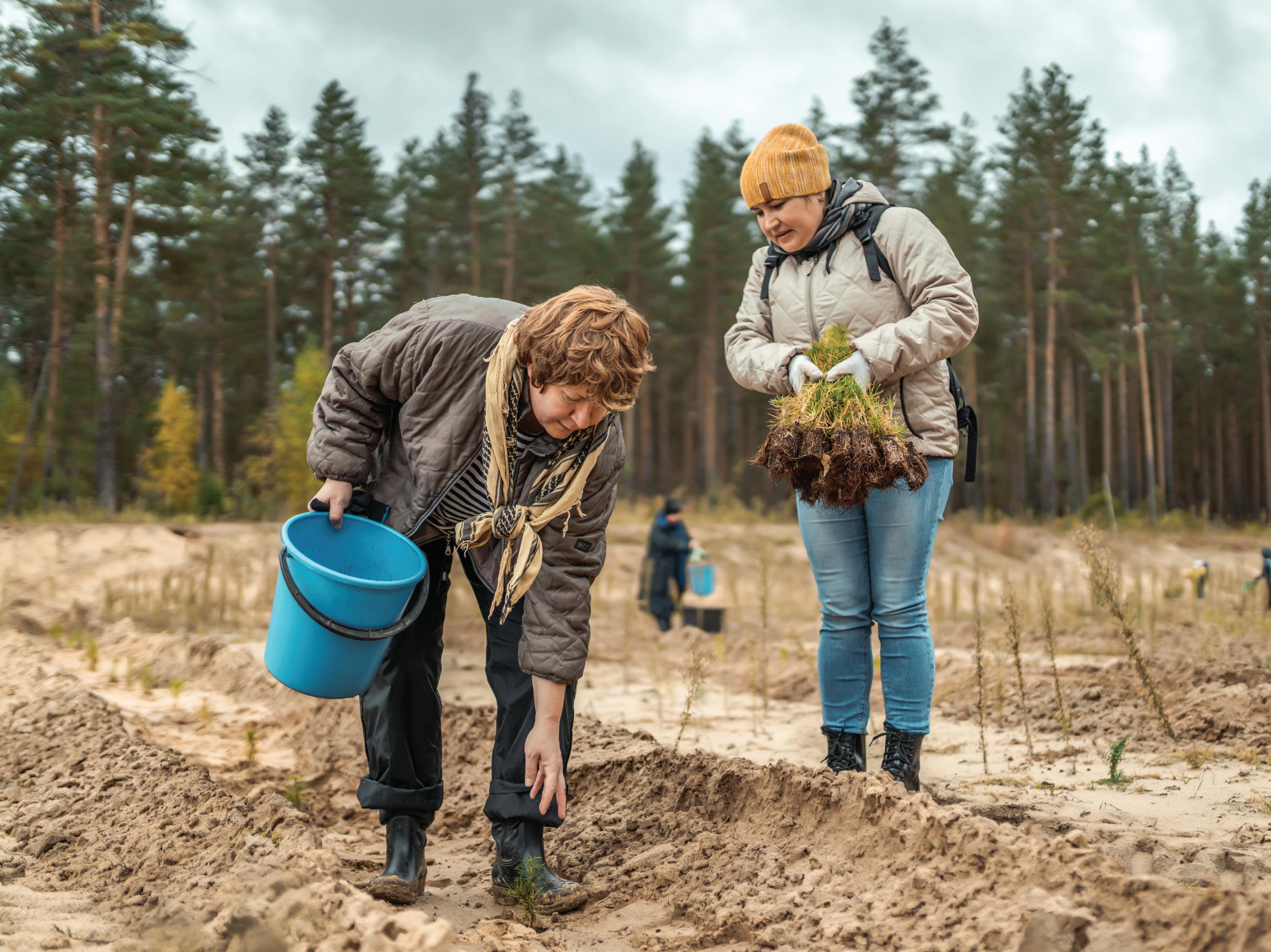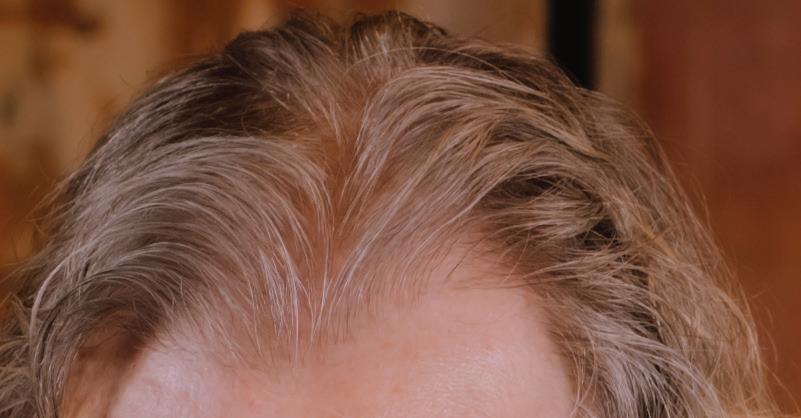
7 minute read
PASSION PURSUITS
from VESTED Summer 2020
by CAPTRUST
In-Home Yoga
by Jeanne Lee
Advertisement
by Jeanne Lee
If you're not yet ready to get back into group exercise, you can still embark on a fitness journey that will take you places and open amazing vistas within yourself, sans the membership fee, group exercise, or even stepping off your property.
Yoga is an ancient form of mind-body practice that does a lot with very little, boosting your physical strength, immune system, and spirit. People of any age can practice. And to get started, all you need is to carve out a small space in your house or yard, just big enough for you and your yoga mat.
“The wisdom of yoga teaches us to accept the reality of the moment There’s also good news for the more than half of U.S. seniors who and do the best you can to deal with the situation,” says master struggle with various forms of chronic pain. Yoga can soothe their teacher Krishan Verma, a yoga practitioner for more than 50 years suffering while helping them avoid the dangers of opioid and founder of the Sri Sri Yoga Teacher Training program in painkillers. Scientists have learned that longtime sufferers of Québec City, Canada. “Yoga can be helpful for anyone, regardless chronic pain experience physical alterations to the neural circuitry of their age, health condition, or religion.” of the brain, and these changes can cause drugs to lose effectiveness. But mind-body practices like yoga appear to protect This gentle but powerful exercise is growing in popularity, with one against, and even undo, these neurodegenerative effects, according in seven Americans now practicing yoga, according to the National to research from the National Institutes of Health. Center for Complementary and Integrative Health. One of the most fascinating No Pain, Lots of Gain One of the most fascinating scientific scientific discoveries about yoga has to do with its ability to keep Part of yoga’s unique appeal is how discoveries about yoga has to do with the brain youthful and positive. An little it demands. Unlike spin classes, CrossFit, or Tabata, yoga its ability to keep the brain youthful anti-aging effect was observed after just eight weeks of a mindfulness requires no pain, sweat, or tears. There is no leaderboard in yoga, no winners or losers, and never a need and positive. An anti-aging effect was observed after just eight weeks of a stress reduction program. While it’s a normal part of aging for the brain to shrink and lose some gray to step on a scale. The perfect activity for introverts, yoga does mindfulness stress reduction program. matter, researchers using magnetic resonance imaging (MRI) scans not pressure you to measure up to were able to see that practitioners any standard—or even leave the of yoga retained more of their house. Yoga only asks that you remove all judgment and be present brain volume. Their brains were more similar to those of much in the moment. An antidote to a competitive society, yoga teaches younger people. that simply spending time on your mat, at home, is the perfect way to join this 5,000-year-old tradition. Interestingly, this protective effect was found to be more pronounced on the left brain, which is the side that is associated “Yoga means union. It is time to connect and unite, something that with joy and relaxation. “Years of yoga experience correlated we may have neglected previously because of our busy lives,” says mostly with GM [gray matter] differences in the left hemisphere ... Verma. “Use this time wisely. Learn new things. Stay connected suggesting that yoga tunes the brain toward a parasympathetically with people.” driven mode and positive states,” researchers wrote in Frontiers in Human Neuroscience. While this form of movement is perhaps best known for improving flexibility and balance, the physical and mental benefits of yoga This happy phenomenon may help explain why two-thirds of yoga actually go much further, as a slew of scientific research reveals. students and 85 percent of yoga teachers who initially are attracted to yoga’s many physical benefits so often end up exploring the Yoga brings out the power that lies in passivity and sitting with your practice’s deeper dimensions. “Most initiate yoga practice for breath. The ultimate low-impact exercise, yoga is, surprisingly, as exercise and stress relief, but for many, spirituality becomes their protective of heart health as much more strenuous forms of primary reason for maintaining practice,” according to a study exercise. Those who practice regularly can experience weight loss, published in the Journal of Health Psychology in 2016. reduced blood pressure, and lowered cholesterol counts, according to a study in the European Journal of Preventive Cardiology. Body, Breath, Mind, and Spirit
Researchers found that yoga practitioners exhibited more vitality, better sleep patterns, and less depression in a meta-analysis published in the International Journal of Behavioral Nutrition and Physical Activity. There’s also strong evidence that yoga can relieve chronic low back pain, according to a review in the Clinical Journal of Pain. Other research suggests yoga can relieve some chronic illnesses, including chronic fatigue syndrome, asthma, irritable bowel syndrome, and others, just as well as pharmaceuticals—but without the side effects. “Yoga is good for the well-being of all layers of our existence—that is, body, breath, mind, and spirit,” says Verma. “The wellness of each layer affects the wellness of the other layers. For that reason, yoga teachers talk about mind and spirit. Also, many yoga students want to know more about themselves and are very interested in spirituality. Yoga provides answers to their questions and provides a spiritual path for them to learn and understand more about themselves.”
Breath is life, says a Sanskrit proverb popular among yogis. From a scientific point of view, the type of mindful breathing known as pranayama can trigger the body’s relaxation response, signaling the parasympathetic nervous system to slow the heart rate, soothe digestion, and reduce stress levels.
Do you want to experience these benefits, but you’re worried you’re not fit or flexible enough for yoga? There’s no such thing. An easy path for beginners is restorative yoga, a meditative and relaxing style based on yoga that emphasizes passive stretching and long-held poses. The gentle work of restorative yoga poses can lower cortisol levels, relieve pain and anxiety, and assist with weight loss.
Restorative yoga helps counter the hectic forces of modern life with stillness and breathing. While seated or lying down, you move through a restorative yoga sequence of five or six poses, such as gentle twists, reclining poses, or forward bends. For example, you might lie with your legs up against the wall or sit on the floor folding over your legs, perhaps supported by a yoga block or folded blanket. For five or 10 minutes, you remain in the posture, focusing on your breath, gradually allowing gravity and the weight of your own body to take you deeper. Without conscious effort, you’ll notice your mind calming and tense muscles releasing.
As your at-home yoga practice becomes a consistent part of your daily routine, you may begin to notice small changes. You might feel more flexible, or you may be more at ease when picking things up or bending over. Perhaps you’ll develop a habit of simply noticing when negative emotions rise and start to accept them and let them go without judgment. You may find space in formerly tight joints and tendons, as well as more capacity in your mind and spirit. These are signs that you are reaping the benefits of yoga, in being present to yourself and the ones around you. YOGA ESSENTIALS
One of the great things about yoga is that you don’t need a lot of gear to practice it! Here is a list of recommended items if you want to try your hand at yoga, according to yogabasics.com.
Yoga Mat A yoga mat provides padding as well as a nonslip surface to practice on. A classic yoga mat is best for beginners, but upgrading to a thicker mat is recommended if you are practicing on a wood floor.
Yoga Props Yoga props are very helpful when starting yoga. Use a yoga block to stabilize standing poses, use a yoga strap to stretch further in seated poses, and use a bolster or a blanket for restorative poses.
Yoga Clothing Wearing loose or stretchable clothing is best for practicing yoga poses. There are many clothing manufacturers that specialize in yoga clothes, but you will pay a premium for the fit and performance, so you might want to start with what you already have in your closet.
Instructional CD, Book, or DVD Find a resource to help you learn the standing poses that form the foundation of a complete yoga practice and get you up to speed on the fundamentals of yoga. Look for a CD, book, or DVD specifically for someone just beginning a yoga practice. Yogabasics.com recommends Yoga: Mastering the Basics and Yoga Journal’s Beginning Yoga Step by Step instructional DVD.







